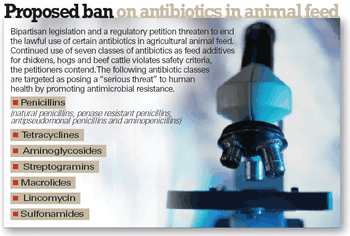
Washington — As the U.S. Food and Drug Administration (FDA) faces a regulatory petition to ban antibiotics in animal feed, veterinary leaders watch as Congress considers roughly identical measures.

Washington — As the U.S. Food and Drug Administration (FDA) faces a regulatory petition to ban antibiotics in animal feed, veterinary leaders watch as Congress considers roughly identical measures.

images

An expert overview of the latest options for diagnosing, treating, and preventing Leptospirosis.

Nestle Purina introduces Pro Plan's line of cat food that contains protein levels at 40 percent or higher, the highest level of protein available in any dry cat food brand, the company says.

We use hot-water bottles to provide comfort to our patients while they are in the hospital.

When inventorying large quantities of medication, we use the cell counter to keep track of the number of pills we've counted.

Most therapeutic shampoos don't spread well.

Borrowing an idea from my pediatrician, I give my clients with puppies and kittens handouts at each wellness visit.

A laundry bag designed for washing delicate linens is great for bathing cats in.

To treat dogs reluctant to be medicated, I take them by the door used to let dogs outside.

Viral infections produce lesions on unfeathered areas of skin around the eyes, cere and feet.

Veterinary leaders plan to pitch a $1-million program to Congress, calling for educational debt relief for DVMs who practice in underserved and largely rural areas of the United States.

Philadelphia — Drs. John Wolfe and Charles Vite of the University of Pennsylvania discovered a way to treat naturally occurring genetic disease of the central nervous system in cats.

Manhattan, Kan — Pending study results reportedly track a shortage of food-supply veterinarians in the United States and rate the nation's demand for them.
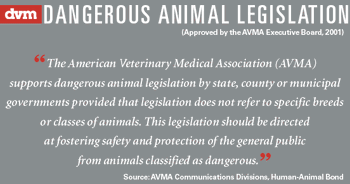
Columbus, Ohio — Lack of science supporting the case that aggression is not a breed-specific behavior damages the profession's attempts to remove the term "Pit Bull" from dangerous dog legislation.
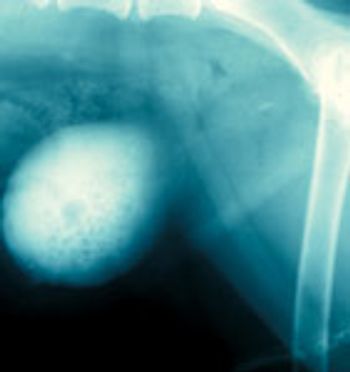
Because the uroliths were smooth, they were readily repulsed into the urinary bladder by retrograde urohydropropulsion.

Ames, Iowa — A non-traditional agreement between the University of Nebraska-Lincoln (UNL) and Iowa State University (ISU) has students split between schools, and signals the end of a 20-year partnership between UNL and Kansas State University (KSU).

Carson City, Nev. — The Nevada Veterinary Medical Association (NVMA) is monitoring two bills, including one requiring DVMs to obtain owner authorization prior to administering vaccines or performing diagnostics on animals.

Austin, Texas — Texas House Bill 522, if passed, would require veterinarians to write prescriptions for client's pets on demand — an issue that creates numerous concerns for the Texas Veterinary Medical Association (TVMA) as well as practitioners.
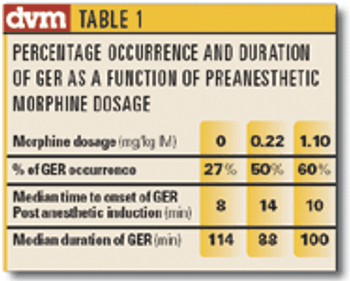
The incidence of GER increased with a rising dose of preanesthetic morphine.

Automated processes, forms might not garner the data you seek

Shower in ... Get me out

The Academy of Rural Veterinarians (ARC) wants a few future practitioners to take the off-ramp to city careers.

Clearfield, Iowa—He sat in the back of the ambulance, sirens blaring — an odd time for reflection.

Synbiotics reintroduces Witness CPV canine parvovirus antigen test kit.
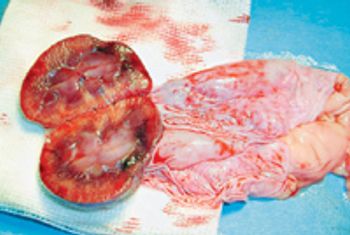
An 11-year-old 14.5 lb (6.6 kg) castrated male domestic shorthaired cat was presented for evaulation of a progressively distended abdomen.

AgriLabs introduces the Salmonella Newport Bacterial Extract vaccine that uses Siderophore Receptors and Porins (SRP) — which was recently approved by the United States Department of Agriculture.
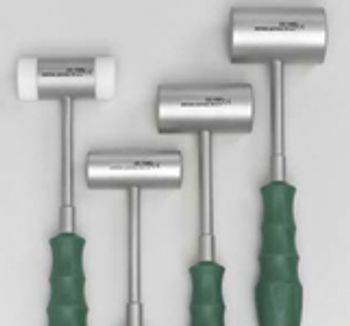
Spectrum introduces its new line of orthopedic mallets.

Products Group International introduces biopsy needles that can be used with one hand, are automatic and disposable.
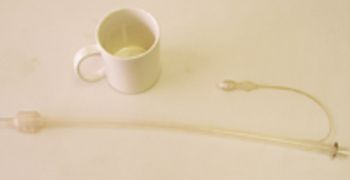
Jorgensen introduces silicone swine endotracheal tubes.